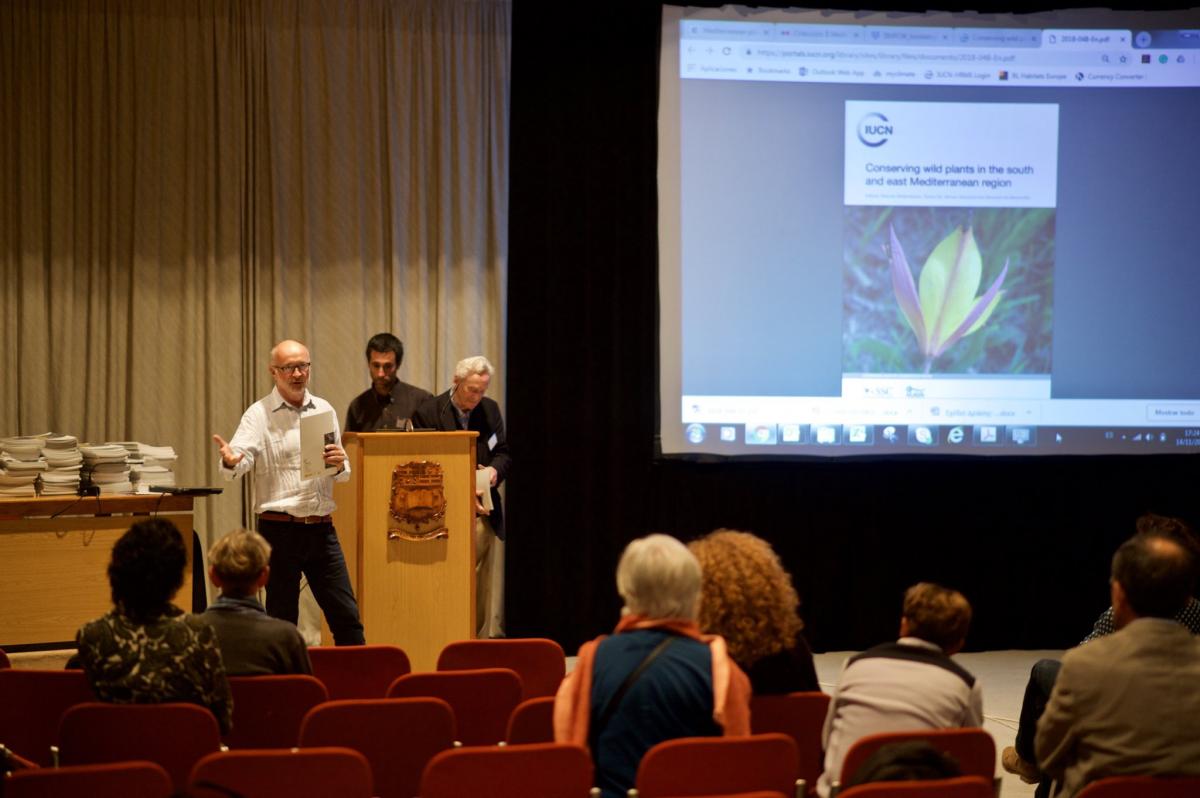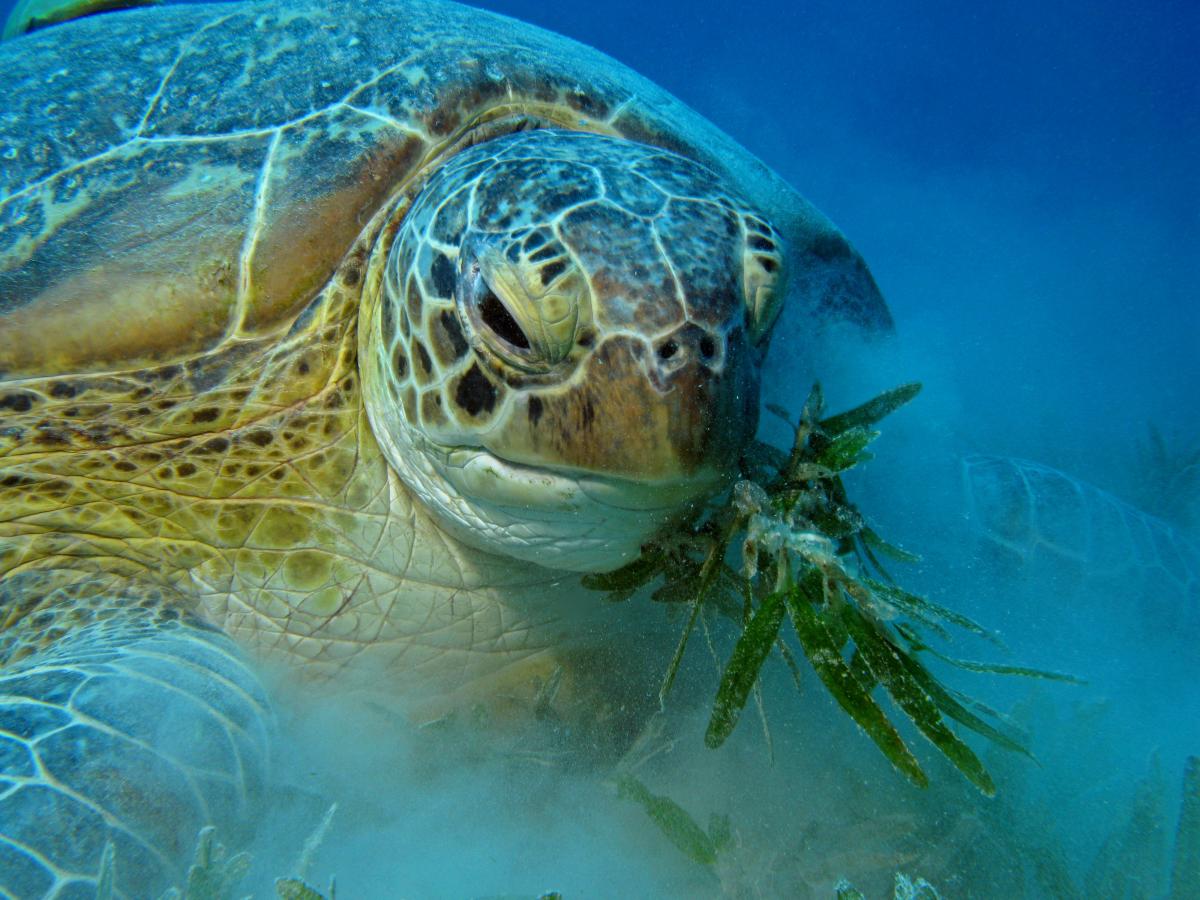New IUCN publication reveals opportunity to integrate plant conservation into environmental agenda of climate change policies in the Mediterranean
With a regional and collective approach, the IUCN publication “Conserving wild plants in the south and east Mediterranean region” provides a broad overview to promote effective plant conservation priorities in the region.

Photo: PC: Pilar Valbuena
This collection of up-to-date data on wild plant species will allow for swift responses to the threats faced by species in the region and will help conservation policy makers and a wide range of practitioners (such as land managers, non-governmental organizations, local communities and conservation agencies) to implement plant conservation programs and initiatives in the region.
As the environmental agenda during the next decade will inevitably be linked to climate change impacts on species and habitats, this publication highlights that there is a clear opportunity to integrate plant conservation into climate change policies through the Nationally Determined Contributions for the United Nations Framework Convention on Climate Change.
“Botanical diversity not only sustains human wellbeing, but is also the foundation for the rest of biodiversity. This publication is a collective effort to gather existing knowledge on plant conservation in the region” says Marcos Valderrábano, Ecosystem Program Coordinator at the IUCN Centre for Mediterranean Cooperation.
One of the chapters compiles the latest information on the subset of KBAs (Key Biodiversity Areas) that have been identified for plants. Developing management plans for plants in KBAs remains the next urgent challenge as many KBAs overlap with the Protected Areas network, but most Protected Areas in the region do not have management plans that include targeted actions or monitoring strategies for wild plant species.
This initiative, coordinated by the IUCN Centre for Mediterranean (IUCN-Med) will enable decision makers to integrate plant conservation priorities into broader conservation actions or initiatives. This will in turn contribute to meet national reporting needs and global commitments to the UN Sustainable Development Goals and the Aichi Targets of the Convention on Biological Diversity.
More than 40 authors and dozens of contributors have developed this single document - an overview of existing knowledge on plant diversity, which provide concrete strategies for plant conservation, with local examples that are applicable in the south and east Mediterranean region.
Plant biodiversity hotspot
The Mediterranean Region is a worldwide recognized biodiversity hotspot and hosts some 25,000 vascular plant species. However, plant diversity is often overlooked in the conservation agenda and focus is frequently on more “iconic” organisms, such as birds, mammals or reptiles. In addition, conservation infrastructure and resources in the south and east lag behind those of the European part of the Mediterranean. As a consequence, the dialogue between plant scientists, site managers, communities, local populations and civil society organizations tend to be fragmented.
“For successful plant conservation, we need not just scientific input but, equally important, if not more so, field experience” says Bertrand de Montmollin, expert, from the IUCN Species Survival Commission /Mediterranean Plant Specialist Group.
The identification of effective conservation priorities is critical when resources are limited. Integration of IUCN knowledge products offers a cost-effective and efficient opportunity to strengthen regional biodiversity spatial planning portfolios. Information from the IUCN Red List of Threatened Species and the World Database on Key Biodiversity Areas was used in this publication to deliver critical analyses and guide the work of decision makers on behalf of Mediterranean plan conservation. This is a good example of the convening role of IUCN-Med and its capacity to mobilize experts.
The 2nd Mediterranean Plant Conservation Week (MPCW) with the theme “Conservation of Mediterranean Plant Diversity: Complementary Approaches and New Perspectives” took place at the University of Malta, Valletta Campus from 12 to 16 November 2018. The main organizers are the IUCN Centre for Mediterranean Cooperation, CARE-MEDIFLORA project and the University of Malta.
This publication has been made possible thanks to the financial support of the MAVA Foundation and the commitment of IUCN through its Species Survival Commission (Mediterranean Plant Specialist Group) and its Centre for Mediterranean Cooperation.
Access to the publication HERE.
For more information, please contact:
Lourdes Lázaro Marín, IUCN Communications, M: +34 615 44 14 08 email: lourdes.lazaro@iucn.org



